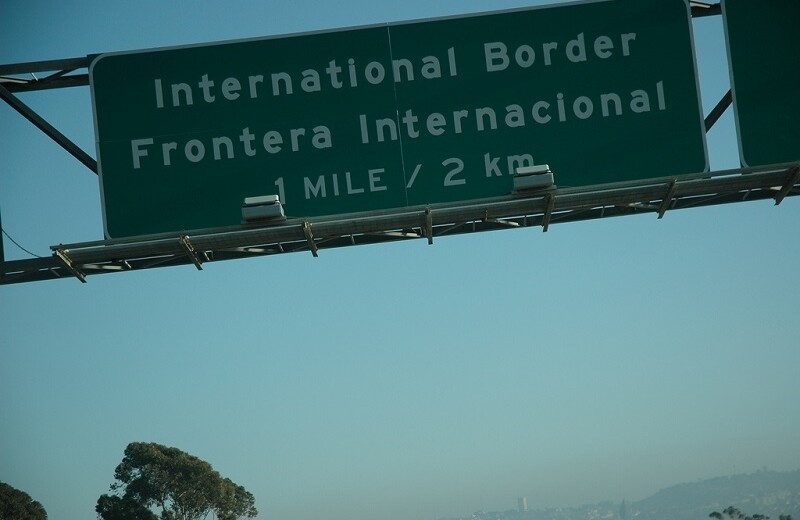This article originally appeared on the Ethics & International Affairs blog.
The events in the Kerch Straits connecting the Black Sea and the Sea of Azov and on the U.S.-Mexico border at the San Ysidro crossing, although occurring in different parts of the world and are different sorts of crises (one, an armed clash between Ukrainian and Russian naval vessels, the other confrontation between a migrant caravan and U.S. border patrol officers), have several things in common. They both touch on the questions of borders (land and maritime), rights of access and passage, questions of sovereignty, what authority is competent to interpret law, and when and under what circumstances force is allowable.
The Kerch crisis reflects a Russian effort to reclassify the status of the waters of the Sea of Azov, de facto if not de jure, into Russian territorial waters, and to assert Russia's ability to back up its claims with force if necessary. The Ukrainians reject these efforts both by affirming the internationally-recognized position that Crimea remains Ukrainian territory, and on the basis of a 2003 agreement that defined rights of access for Ukraine through the Sea of Azov to its eastern ports. In many ways, this is a classic clash of possession being the most important factor in determining rights and status (Russia) versus the principle of right triumphing over might (Ukraine).
The San Ysidro crisis fits into a larger pattern of migrations that have impacted Western countries for the last several years: the right of people to seek asylum; whether asylum-seekers must find the first point of safe refuge or can continue to more hospitable locations; the right to cross borders and to make petitions for asylum; and questions, for both Mexico and the U.S., of sovereign rights to control borders and movement. The U.S. has come under intense criticism for using force to disperse migrants attempting to cross the U.S.-Mexico border, including the firing of tear gas into groups that contained children. The Mexican Foreign Ministry has asked the United States to investigate the use of "non-lethal weapons" whose effects crossed into Mexican territory—a reflection that while the U.S. maintains the right to defend its borders, Mexico argues that, since the impacts negatively affected Mexican territory, Mexico's sovereignty is also at stake.
At the same time, Mexico's National Human Rights Commission issued an unexpected criticism of the actions of the migrant caravan group that attempted to cross the U.S.-Mexico border by noting that migrants, even if they are claiming a right to asylum, "should respect Mexican laws and not engage in actions that affect the communities they pass through. It is important to note that the fact the Mexican government protects their rights does not imply a free pass to break the law."
In addition, there are issues of domestic constitutionality, for instance, whether a President using executive authority can require asylum seekers to make their petitions for status outside of U.S. territory or to prevent those who have crossed without authorization from making such claims. Yet, at the basis of all of this is the most fundamental question: the right to entry or ability to bar entry. Who decides? Who adjudicates? Which legal and ethical claims have priority?
The Kerch and San Ysidro crises, however, are a sign that despite all the talk about globalization and the disappearance of borders, lines drawn on maps continue to matter. It perhaps reflects a myopia of the so-called "Davos class"—the middle and upper classes that are used to easy travel and access around the world and for whom borders are, at most, a minor bureaucratic inconvenience to be dealt with at airports—that for most people, borders still matter—either to deter or prevent them from crossing (as in the case of the migrants to Europe and North America) or to delineate communities in terms of who receives resources and who has a claim on the state to obtain help and recourse. In a world that may be shrinking due to technology but is still formally divided into sovereign nation-states, those lines still matter—and, whether on the basis of fear (of others), honor (defending rights) or interest (securing what we have against others), as the Greek historian Thucydides rightly observed, conflict will still ensue.



